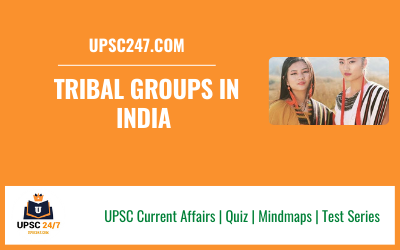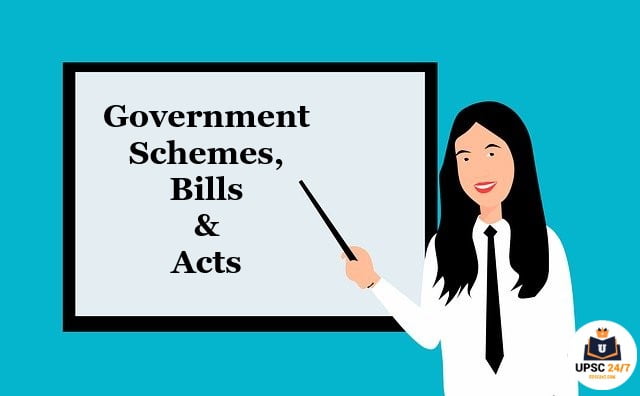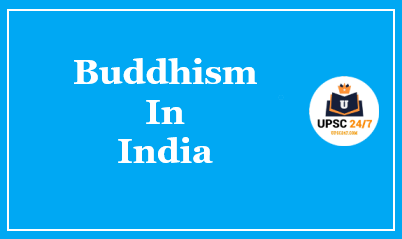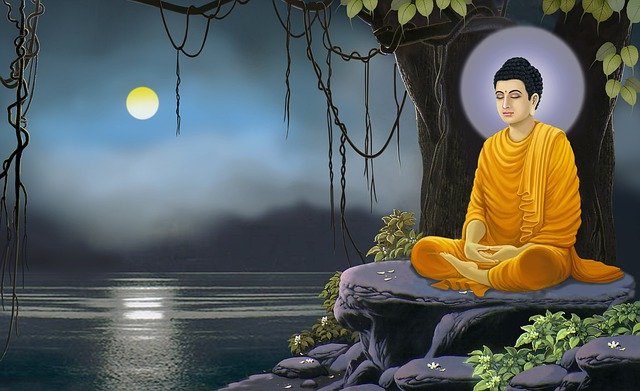Tribes of India | UPSC – Tribes In India Is An Important Topic For UPSC Prelims, Mains And Many optional Papers of UPSC . In this Article We Will Discuss All Details about Tribes, Different Types Of Tribes And Their Position In India According To Indian Constitution .
The Constitution of India has recognized tribal communities in India under ‘Schedule 5’ of the constitution. Hence the tribes recognized by the Constitution are known as ‘ Scheduled Tribes’.

What Is A Tribe ?
- A tribe is a social division in a traditional society consisting of families linked by social, economic, religious, or blood ties, with a common culture and dialect.
- A tribe possesses certain qualities and characteristics that make it a unique cultural, social, and political entity.
- Tribes are also known by the name ‘Adivasis’ in India.
India And Tribes Population In India :
- India has been described as a “melting pot” of races and tribes.
- India has one of the largest and diverse tribal populations in the world.
- The tribal population in India according to the 2011 census is 104 million or 8.6% of the total population.
- Madhya Pradesh has the largest population (15.3 million i.e 21%) according to number and Lakshadweep has the highest population (94.8%) compared to its total population.
- The largest tribe are Bhils nearly 46 lakh and the smallest tribe are Andamanese only 19 members.
States and union territories having maximum ratio of scheduled tribes, as per Census-2011 (in descending order) :
- Lakshadweep (94.8%) > Mizoram (94.4%) > Nagaland (86.5%) > Meghalaya (86.1%) > Arunachal Pradesh (68.8%).
States and Union territories having minimum ratio of Scheduled tribes, as per Census-2011 (in ascending order) :
- Uttar Pradesh (0.6%) < Tamil Nadu (1.1%) < Bihar (1.3%) < Kerala (1.5%) < Uttarakhand (2.9%)
- Punjab, Haryana, Chandigarh, Delhi and Puducherry have no population of Scheduled tribes.]
State-wise Total Population of Scheduled Tribes (in descending order)
| State | Population of Scheduled Tribes (in lakh) | Percentage |
| Madhya Pradesh | 152.3 | 14.70% |
| Maharashtra | 105.3 | 10.10% |
| Odisha | 95.9 | 9.20% |
| Rajasthan | 92.8 | 8.90% |
| Gujarat | 89.6 | 8.60% |
| Jharkhand | 86.5 | 8.30% |
| Chhattisgarh | 78.2 | 7.50% |
Sex Ratio Scheduled Tribes
- As per Census 2011, the sex ratio in India is 943 whereas it is 990 in scheduled tribes.
- The sex ratio of children (0-6 age group) in India is 919 whereas that of it are 957 in scheduled tribes.
- The sex ratio in scheduled tribes is in favour of females in Goa (1046), Kerala (1025), Arunachal Pradesh (1032), Odisha (1029) and Chhattisgarh (1020).
- In Jammu and Kashmir (924) the sex ratio in scheduled tribes is the lowest in the country.
Literacy of Scheduled Tribes
- As per Census 2011, the rate of literacy in India is 72.99% whereas that of it in scheduled tribes is 59%.
- State-wise, the rate of literacy in scheduled tribes is highest in Mizoram (91.7%) and lowest in Andhra Pradesh (49.2%).
- Among union territories, the highest rate of literacy in scheduled tribes is in Lakshadweep (91.7%).
Important Points About Tribes In India
- The total population of Scheduled Tribes is 10.43 crore as per the Census 2011.
- Tribes accounts for 8.6% of the total population of the country.
- The Scheduled Tribes in India form the largest proportion of the total population in Lakshadweep and Mizoram followed by Nagaland and Meghalaya.
- Madhya Pradesh has the largest number of scheduled Tribes followed by Orissa.
- Bastar district of Chattisgarh consists of the largest number of Scheduled Tribes.
- There are no Scheduled Tribes in Punjab, Delhi, Chandigarh, Pondicherry, Haryana.
Scheduled Tribes And Indian Constitution :
- The term ‘Scheduled Tribes‘ first appeared in the Constitution of India.
- Article 366 (25) defined scheduled tribes as “such tribes or tribal communities or parts of or groups within such tribes or tribal communities as are deemed under Article 342 to be Scheduled Tribes for the purposes of this constitution”.
- Article 342, which is reproduced below, prescribes procedure to be followed in the matter of specification of scheduled tribes.
Article 342 : E Rupi | UPSC |
- The President may, with respect to any State or Union territory, and where it is a state, after consultation with the Governor thereof by public notification, specify the tribes or tribal communities or parts of or groups within tribes or tribal communities which shall, for the purposes of this constitution, is deemed to be scheduled tribes in relation to that State or Union Territory, as the case may be.
- Parliament may by law include in or exclude from the list of Scheduled tribes specified in a notification issued under clause(1) any tribe or tribal community or part of or group within any tribe or tribal community, but save as aforesaid, a notification issued under the said clause shall not be varied by any subsequent notification.
- Thus, the first specification of Scheduled Tribes in relation to a particular State/ Union Territory is by a notified order of the President, after consultation with the State governments concerned. These orders can be modified subsequently only through an Act of Parliament.
- The above Article also provides for listing of scheduled tribes State/Union Territory wise and not on an all India basis.
Ministry of Tribal Affairs
- Ministry of Tribal Affairs is responsible for the overall development of the scheduled tribes in India.
- This Ministry was set up in 1999 after the bifurcation of the Ministry of Social Justice and Empowerment with the objective of providing a more focused approach on the integrated socio-economic development of the Scheduled Tribes (STs), the most underprivileged of the Indian Society, in a coordinated and planned manner.
- The Ministry of Tribal Affairs shall be the nodal Ministry for overall policy, planning, and coordination of programs of development for the Scheduled Tribes.
- In regard to sectoral programs and schemes of development of these communities policy, planning, monitoring, evaluation, etc. as also, their coordination will be the responsibility of the concerned Central Ministries/ Departments, State Governments, and Union Territory Administrations.
National Commission for Scheduled Tribes (NCST)
- The National Commission for Scheduled Tribes (NCST) was established by amending Article 338 and inserting a new Article 338A in the Constitution through the Constitution (89th Amendment) Act, 2003.
- By this amendment, the erstwhile National Commission for Scheduled Castes and Scheduled Tribes was replaced by two separate Commissions namely- the National Commission for Scheduled Castes (NCSC) the National Commission for Scheduled Tribes (NCST) w.e.f. 19 February 2004.
Tribal Sub Plan (TSP) strategy
- The Tribal Sub Plan (TSP) strategy is a Government of India initiative aimed for the rapid socio-economic development of tribal people.
- The funds provided under the Tribal Sub Plan of the State have to be at least equal in proportion to the ST population of each State or UTs.
- Similarly, Central Ministries/Departments are also required to earmark funds out of their budget for the Tribal Sub-Plan. As per guidelines issued by the Planning Commission, the Tribal Sub Plan funds are to be non-divertible and non-lapsable.
- The National Commission for Scheduled Tribes is vested with the duty to participate and advise in the planning process of socio-economic development of STs, and to evaluate the progress of their development under the Union and any State.
Particularly Vulnerable Tribal Groups (PVTGs)
PVTGs are more vulnerable among the tribal groups. In India, tribal population makes up for 8.6% of the total population. In 2006, the Government of India renamed the PTGs as PVTGs.
- There Are 75 tribal groups have been categorized by Ministry of Home Affairs as Particularly Vulnerable Tribal Groups (PVTG)s.
- PVTGs reside in 18 States and UT of A&N Islands.
- They have declining or stagnant population, low level of literacy, pre-agricultural level of technology and are economically backward.
- They generally inhabit remote localities having poor infrastructure and administrative support.
Committees For PVTGs :
- In 1973, the Dhebar Commission created Primitive Tribal Groups (PTGs) as a separate category, who are less developed among the tribal groups.
- In 1975, the Government of India initiated to identify the most vulnerable tribal groups as a separate category called PVTGs and declared 52 such groups, while in 1993 an additional 23 groups were added to the category, making it a total of 75 PVTGs, spread over 18 states and one Union Territory (A&N Islands) in the country (2011 census).
- Among the 75 listed PVTG’s the highest number are found in Odisha (13), followed by Andhra Pradesh (12).
The criteria followed for determination of PVTGs are as under:
- A pre-agriculture level of technology.
- A stagnant or declining population.
- Extremely low literacy.
- A subsistence level of the economy.
Scheme for development of PVTGs:
- The Ministry of Tribal Affairs implements the Scheme of “Development of Particularly Vulnerable Tribal Groups (PVTGs)” exclusively for them.
- Under the scheme, Conservation-cum-Development (CCD)/Annual Plans are to be prepared by each State/UT for their PVTGs based on their need assessment, which are then appraised and approved by the Project Appraisal Committee of the Ministry.
- Priority is also assigned to PVTGs under the schemes of Special Central Assistance (SCA) to Tribal Sub-Scheme (TSS), Grants under Article 275(1) of the Constitution, Grants-in-aid to Voluntary Organisations working for the welfare of Scheduled Tribes and Strengthening of Education among ST Girls in Low Literacy Districts.
Denotified Tribes :
- Denotified tribes were those tribes which were listed under the Criminal Tribes Act 1871 under the British as Criminals and addicted to the systematic commission of non-bailable offences.
- Once declared notified they were required to register with the local magistrate and severe restriction was placed on their movement.
- But after Independence Criminal Tribes Act was repealed and were placed under the Habitual offenders Act. Thus they till now suffer from numerous disabilities due to this and are unable to meet their subsistence needs.
- The Idate Commission appointed by the Government called for the repeal of the Habitual offenders Act to allow for inclusive development of these tribes.
Important Tribes of India (Statewise)
| State | Tribes |
| Andhra Pradesh | Andh, Sadhu Andh, Bhil, Bhaghata, Dhulia,rona, Kolam, Gond, Thoti, Goundu, Kammara, Savaras, Dabba Yerukula, Sugalis, Nakkala, Pardhan, Gadabas, Chenchus A.k.a Chenchawar, Kattunayakan, Jatapus, Manna Dhora |
| Arunachal Pradesh | Singpho, Monpa, Abor, Sherdukpen, Galo,Apatanis |
| Assam | Khasis, Chakma, Dimasa, Gangte, Garos, Hajong, Chutiya |
| Bihar | Gond, Birjia, Asur, Savar, Parhaiya, Chero, Birhor, Santhals, Baiga |
| Chhattisgarh | Nagasia, Biar, Khond, Agariya, Bhattra, Mawasi, Bhaina, |
| Goa | Varli, Dubia, Siddi, Dhodia, Naikda |
| Gujarat | Patelia, Bhil, Dhodia, Bamcha, Barda, Paradhi, Charan, Gamta |
| Himachal Pradesh | Swangal, Gujjars, Lahaulas, Khas, Pangwala, Lamba, Gaddis |
| Jammu and Kashmir | Balti, Garra, Sippi, Bakarwal, Mon, Gaddi, Purigpa, Beda |
| Jharkhand | Gonds, Birhors, Savar, Mundas, Santhals, Khaira, Bhumji |
| Karnataka | Gond, Patelia, Barda, Yerava, Bhil, Koraga, Adiyan, Iruliga, |
| Kerala | Malai, Aarayan, Arandan, Uralis, Kurumbas, Arandan, Eranvallan |
| Madhya Pradesh | Kharia, Bhils, Murias, Birhors, Baigas, Katkari, Kol, Bharia, Khond, Gonds, |
| Maharashtra | Warlis, Khond, Bhaina, Katkari, Bhunjia, Rathawa, Dhodia. |
| Manipur | Thadou, Aimol, Maram, Paite, Chiru, Purum, Kuki, Monsang, Angami |
| Meghalaya | Pawai, Chakma, Raba, Hajong, Lakher, Garos, Jaintias Khasis |
| Mizoram | Dimasa, Raba, Chakma, Lakher, Khasi, Synteng, Kuki, Pawai. |
| Nagaland | Nagas, Angami, Sema, Garo, Kuki, Kachari, Mikir, Konyak, Lotha |
| Odisha | Gadaba, Ghara, Kharia, Khond, Matya, Oraons, Rajuar, Santhals. |
| Rajasthan | Bhils, Damaria, Dhanka, Meenas(Minas), Patelia, Sahariya, Lambada(Banjara). |
| Sikkim | Bhutia, Khas, Lepchas. |
| Tamil Nadu | Adiyan, Aranadan, Eravallan, Irular, Kadar, Kanikar, Kotas, Todas. |
| Telangana | Chenchus. |
| Tripura | Bhil, Bhutia, Chaimal, Chakma, Halam, Khasia, Lushai, Mizel, Namte. |
| Uttarakhand | Bhotia, Buksa, Jaunsari, Raji, Tharu. |
| Uttar Pradesh | Bhotia, Buksa, Jaunsari, Kol, Raji, Tharu. |
| West Bengal | Asur, Khond, Hajong, Ho, Parhaiya, Rabha, Santhals, Savar. |
| Andaman and Nicobar | Great Andamanese, Oraons, Onges, Sentinelese, Shompens. |
| Little Andaman | Jarawa |
| Lakshadweep | Aminidivis, Koyas, Malmis, Melacheris. |
| North-East | Abhors, Chang, Galaong, Mishimi, Singpho, Wancho. |
Most Famous Tribal Groups With Details
| Jarawa Tribe |
|
| Great Andamanese Tribe |
|
| Kurumba Tribe
|
|
| Kanikaran Tribe
|
|
| Irular Tribe
|
|
| Toda Tribe
|
|
| Kodava Tribe
|
|
Siddis Tribe |
|
Apatani Tribes (or Tanni) |
|
Chenchu Tribe |
Festivals:
|
Khonds/ Dongari Khond |
|
Warli Tribe |
|
Nyishi Tribe |
|
Gaddis Tribe |
|
Garo Tribe |
|
Bhils Tribe |
|
Gonds Tribe |
|
Baiga Tribe |
Found In The India Following States :
Occupation :
Cultural Activities :
|
Munda Tribe |
|
Santhal Tribes |
|
Toto Tribe |
|
Bodo Tribe |
|
Rengmas Tribe |
|
Koyank Tribe |
|
Bhutia Tribe |
|
Lepcha Tribe |
|
Source – Laxmikanth , Cenrus Of India And Ministry of tribal Affairs







